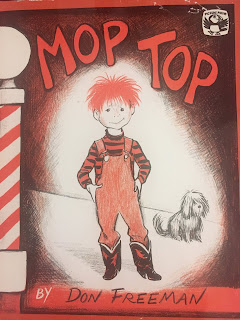Recently, a YouTube video of a Scottish grandmother reading to her grandson went viral. With her grandson, who was too young so sit up on his own, tucked snugly into the crook of her arm, she was reading him a picture book I’d never heard of, The Wonky Donkey. His eyes were wandering but still, she was reading to him. And she was having the best time. As she roared with laughter, I couldn’t help but laugh too, until my eyes teared.
I posted the video to social media and sent it to other children’s-book-loving friends. One of the first responses I received was “I wish it were a better book.”
I was horrified.
This child, this baby, this infant, really, was being exposed to words and pictures, to the opening of a book and the turn of a page, to wordplay and the idea of a cumulative tale, to animal noises. He was being shown that reading is not a chore but a joy. Most importantly, he was experiencing time and affection from his grandmother. What brought them together? A book. That sounds like a darn good book to me.
A few days prior, Marie Kondo’s supposed exhortation that those trying to declutter should get rid of books had created a viral outcry. The minimalists were pitted against the book lovers. As the commenting on social media became increasingly heated, one person in my feed stated in passing that, “But it is a reality that book clutter can be a form of OCD. I’ve seen pictures of people with shelves full of mass market paperback mysteries, and that’s a whole other demographic, but even serious book lovers [emphasis added] can get crowded out and overwhelmed by too many books.”
Again, I was horrified.
Someone who loves mass market paperback mysteries can’t be a serious book lover?
This sort of intellectual book snobbery is offensive. Are some books “better” that others? Well, yes and no. It depends on what standard you are judging them by. Some are sheer entertainment. Some evoke deep emotion. Some have beautifully crafted sentences. Some provoke discussion of social issues. Some make us think about the human condition. Some teach and inform. Some - and they are rare - do some combination of these. For some people, only those that do something in addition to entertain (or perhaps don’t entertain at all!) are worthy.
But on another level all books are good. Even books which are arguably racist, sexist, or otherwise objectionable are opportunities for discussion. As an elementary school librarian, I have to make tough choices about which books to purchase and keep for the library all the time. Budgets and shelf space are finite. Some books really do not belong in my school library for a variety of reasons, but there are no books that I would tell a child not to read because the book did not meet some imagined, arbitrary quality standard. Every year, I conduct a Mock Caldecott competition with my students where we vote for the book with the “best” illustrations and we discuss past winners of the real Caldecott medal, which is awarded annually to the "most distinguished American picture book for children." I always caution my students that just because a book has a shiny gold sticker on it doesn’t mean they will like it. Or that they should. And just because the book they love lacks that sticker doesn’t mean they shouldn’t like it. Taste is, and should be, personal. Janice Clark, the grandma in the video, sets a wonderful example. She teaches us not to be intimidated by books or by reading aloud. Read what you like (especially while the child is too young to object!), and share the experience with someone you love. A book that brings people together is a good book. A book that makes you laugh is a good book. A book that teaches you something is a good book. A book that entertains you is a good book. A book is a good book.
But on another level all books are good. Even books which are arguably racist, sexist, or otherwise objectionable are opportunities for discussion. As an elementary school librarian, I have to make tough choices about which books to purchase and keep for the library all the time. Budgets and shelf space are finite. Some books really do not belong in my school library for a variety of reasons, but there are no books that I would tell a child not to read because the book did not meet some imagined, arbitrary quality standard. Every year, I conduct a Mock Caldecott competition with my students where we vote for the book with the “best” illustrations and we discuss past winners of the real Caldecott medal, which is awarded annually to the "most distinguished American picture book for children." I always caution my students that just because a book has a shiny gold sticker on it doesn’t mean they will like it. Or that they should. And just because the book they love lacks that sticker doesn’t mean they shouldn’t like it. Taste is, and should be, personal. Janice Clark, the grandma in the video, sets a wonderful example. She teaches us not to be intimidated by books or by reading aloud. Read what you like (especially while the child is too young to object!), and share the experience with someone you love. A book that brings people together is a good book. A book that makes you laugh is a good book. A book that teaches you something is a good book. A book that entertains you is a good book. A book is a good book.



























